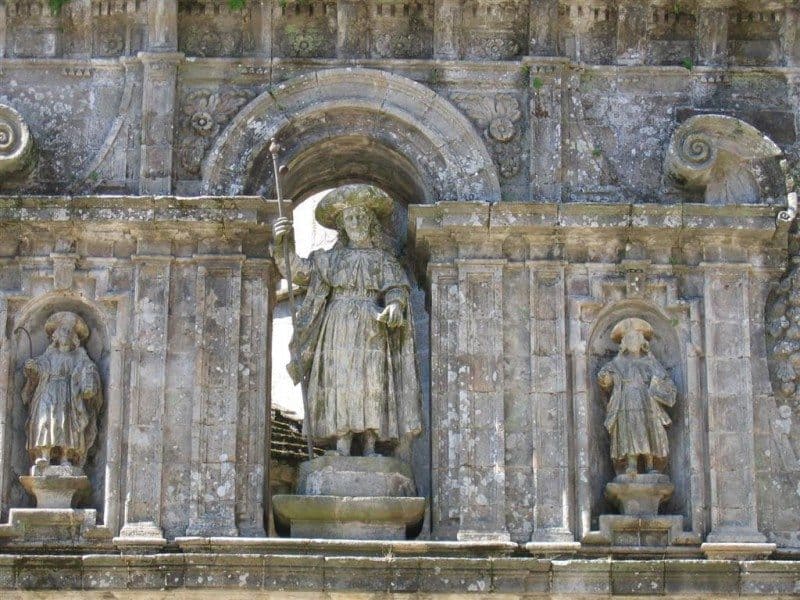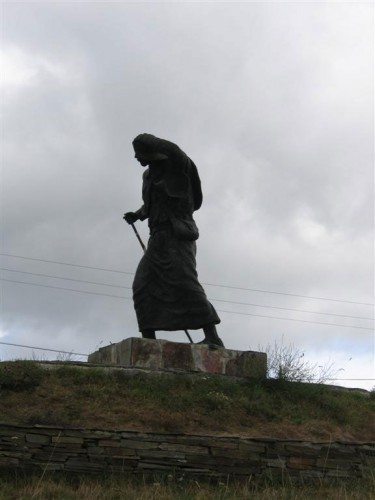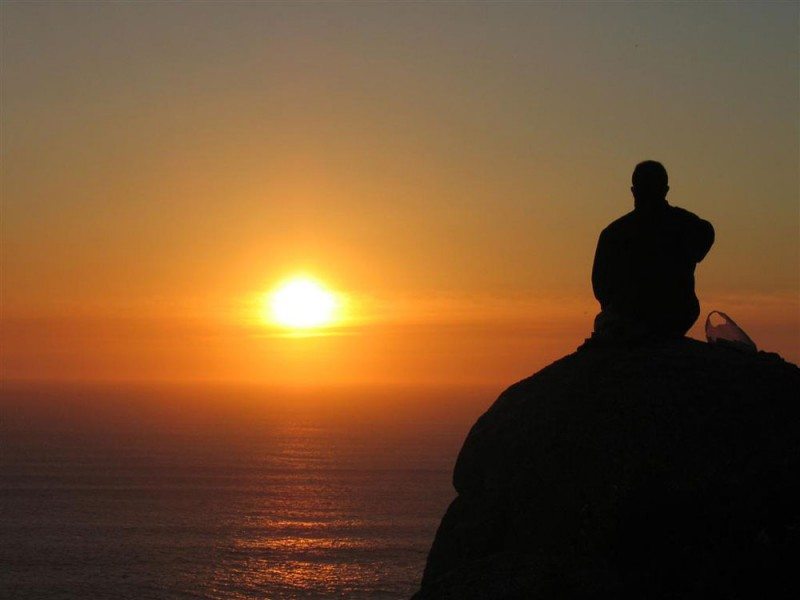A pilgrimage is a journey that holds great significance to a person, often leading them to sacred places or sites associated with religious or spiritual traditions. Throughout my own experiences and research, I have come to understand that these journeys can be profound, transformative experiences that change one’s perspectives on life and spirituality.
I have discovered that pilgrimages can be undertaken for various reasons, such as fulfilling a religious obligation, seeking spiritual growth, or paying homage to a person, place, or idea. Some popular pilgrimage sites include the Camino de Santiago in Spain, Mecca, Lourdes, and the Holy Land, which hold deep spiritual meaning in the Islamic, Christian, and Jewish faiths, respectively. The act of embarking on a pilgrimage enables me to connect with others who share similar beliefs or values and to gain a deeper understanding of my own faith and spirituality.
Throughout history, people have embarked on pilgrimages to find new meaning, personal transformation, or to fulfill a personal vow. Today, these journeys continue to be an important aspect of spiritual life for many individuals. For me, embracing the adventure of pilgrimage allows me to seek personal growth, encounter diverse cultures and experiences, and ultimately, reach a greater understanding of myself.
Defining What is a Pilgrimage
In defining a pilgrimage, it is essential to consider the many factors that contribute to its meaning and the various motivations for embarking on one. A pilgrimage is commonly understood as a journey made toward a sacred place or destination, often with religious intentions. We can understand that these journeys can be spiritual, personal, or compulsory in nature. (Like Pilgrimage routes in Ireland)
Religious Significance
One crucial aspect of a pilgrimage is its religious significance, as the journey typically revolves around a sacred place that’s been sanctified by a divinity or holy person. In many of the world’s major religions, pilgrimages play an essential role for believers to express their faith. As a pilgrim, I might embark on a pilgrimage as an act of religious devotion or to fulfil a personal spiritual quest.
For instance, in Islam, there’s the hajj, which requires all able-bodied Muslims financially able to do so to journey to the holy city of Mecca at least once in their lifetime. In other religious traditions, such as Christianity, people might choose to make pilgrimages to sacred sites such as Lourdes, Jerusalem, or Santiago de Compostela as a form of spiritual reflection or personal growth.
Historical Context
Throughout history, pilgrimages have grown and evolved as part of human culture and religious expression. They often reflect the spiritual and devotional practices of the time, as well as the prevailing social and cultural contexts. The act of engaging in a pilgrimage might involve a prolonged journey, typically undertaken on foot or horseback. Furthermore, a pilgrimage provides a transient experience, allowing pilgrims to step away from their typical lives and identities.
By participating in a pilgrimage, I am connecting with a rich historical tradition that has shaped religious and spiritual practices for ancient and modern societies alike. The act of physically traveling to a sacred site not only offers me a chance for personal growth but it also ties me to the larger pilgrimage narrative that spans across time and cultures.
Types of Pilgrimages
In this section, I will discuss various types of pilgrimages, dividing them into three categories: Major Religious Pilgrimages, Minor Religious Pilgrimages, and Secular Pilgrimages.
Major Religious Pilgrimages
Major religious pilgrimages are significant journeys to sacred sites, often associated with specific religious beliefs or traditions. These pilgrimages are typically organized around well-known and highly visited locations, drawing a large number of pilgrims.
Some examples of major religious pilgrimages include:
- The Hajj, which is the Islamic pilgrimage to Mecca, is required for all adult Muslims who are physically and financially able to make the journey at least once in their lifetime.
- El Camino de Santiago (The Way of St. James) is a Catholic pilgrimage to the Cathedral of Santiago de Compostela in Spain, where the apostle St. James is believed to be buried.
- Visiting the Holy Land is a significant pilgrimage for Christians, Jews, and Muslims alike. Key sites include Jerusalem, Bethlehem, and Nazareth.
Minor Religious Pilgrimages
Minor religious pilgrimages often involve visiting lesser-known sacred sites or those that are important to a specific religious community or denomination. These pilgrimages can still have deep personal significance for those who participate and allow for a more intimate experience.
Examples of minor religious pilgrimages might be visiting the shrine of a local saint, making a journey to a sacred well or natural site, or attending a religious festival at a particular destination.
Secular Pilgrimages
Secular pilgrimages are non-religious journeys undertaken for personal growth, reflection, or to connect with a particular historical or cultural experience. Many people embark on these journeys as a form of self-discovery or to mark a significant milestone in their lives.
Examples of secular pilgrimages may include:
- Walking the trails of famous naturalists or explorers, such as visiting the Galápagos Islands to follow in the footsteps of Charles Darwin.
- Visiting the graves or birthplaces of prominent figures in history, literature, or other fields, like paying homage to William Shakespeare in Stratford-upon-Avon.
- Traveling to sites of major historical events or cultural significance, like the beaches of Normandy to honor the sacrifices made during World War II.
Reasons for Undertaking a Pilgrimage
While exploring the concept of pilgrimage, I’ve discovered various reasons behind undertaking such a journey. Pilgrimages can be driven by spiritual growth, personal reflection, culture, and tradition. In this section, I will dive into each of these factors that motivate people to participate in these transformative experiences.
Spiritual Growth
One of the primary reasons for embarking on a pilgrimage is to foster spiritual growth. Pilgrimages often have a specific destination of religious significance, like the Holy Land or Santiago de Compostela. These journeys can provide devoted individuals with a heightened connection to their faith. Often, the hardships and challenges faced during the pilgrimage serve as lessons that help the participant grow spiritually and strengthen their relationship with a higher power.
Personal Reflection
Another motivation I’ve found is that pilgrimages offer an opportunity for personal reflection. The act of stepping away from daily life and committing to a prolonged journey can create a great environment for introspection. Many pilgrims find life-changing experiences on these journeys, returning with a renewed sense of their purpose in life and recommitting to their spiritual practices.
Culture and Tradition
Lastly, I’ve observed how culture and tradition play a significant role in undertaking pilgrimages. Family and community members may have been going on these journeys for generations, making it a rite of passage. Medieval pilgrims went on such journeys for reasons such as devotion, healing, and penance. Today, many still carry on these customs, seeking a deeper understanding of their religious and cultural heritage during their pilgrimage.
In conclusion, a combination of spiritual growth, personal reflection, and the influence of culture and tradition contribute to the various reasons individuals choose to participate in pilgrimage experiences.
Famous Pilgrimage Sites
While researching pilgrimages, I have come across several famous pilgrimage sites that attract millions of visitors each year. These sites hold great religious and cultural significance for various faiths across the globe.
Mecca
Mecca, located in Saudi Arabia, is the holiest city in Islam. Every year, millions of Muslims embark on the Hajj pilgrimage, which is one of the Five Pillars of Islam. During my visit to Mecca, I observed the Kaaba, a cuboid shaped building that is considered the House of Allah, and completed the traditional rituals associated with the Hajj.
Jerusalem
Jerusalem is a significant pilgrimage destination for three major Abrahamic religions: Judaism, Christianity, and Islam. When I traveled to Jerusalem, I visited the Western Wall, a holy site for Jews, as well as the Church of the Holy Sepulchre, where it is believed Jesus was crucified and buried. I also spent time at the Dome of the Rock, which is an important site for both Muslims and Jews.
Varanasi
Varanasi is a sacred city in Hinduism, often referred to as the spiritual capital of India. During my visit, I witnessed the ritual bathing at the ghats along the Ganges River, which is believed to cleanse one’s sins. I also explored the city’s many temples and observed various ceremonies and offerings to the Hindu gods and goddesses.
Lourdes
Lourdes, a small town in France, is a renowned Catholic pilgrimage site. I visited the Sanctuary of Our Lady of Lourdes, where the Virgin Mary is believed to have appeared to Bernadette Soubirous in 1858. Millions of pilgrims travel to Lourdes each year, seeking healing from the famed spring waters at the Grotto of Massabielle.
Camino de Santiago
The Camino de Santiago, or the Way of St. James, is a network of ancient pilgrimage routes across Europe, all leading to the shrine of the apostle St. James in Santiago de Compostela, Spain. While walking the Camino, I discovered numerous historic sites, breathtaking landscapes, and experienced a sense of camaraderie with fellow pilgrims from around the world.
Modern Pilgrimage Practices
As a writer and a seeker, I’ve witnessed the evolution of pilgrimage practices over time. In today’s world, the idea of pilgrimage has expanded to include various forms and experiences that cater to modern sensibilities and expectations. In this section, I will be discussing three notable modern pilgrimage practices, Pilgrimage Tourism, Virtual Pilgrimages, and Environmental Impact, in order to provide an overview of how the ancient practice of pilgrimage continues to evolve.
Pilgrimage Tourism
In recent times, I have noticed a growing trend of pilgrimage tourism, where traveling to sacred or significant sites has become an opportunity for leisure, cultural exploration, and personal growth. Individuals from different religious backgrounds, or even those seeking a unique spiritual experience, embark on these journeys.
For instance, pilgrimages to places such as Lourdes in France, Santiago de Compostela in Spain, or Mecca in Saudi Arabia have become increasingly popular destinations for both religious and non-religious travelers alike. This shift has transformed pilgrimage into a multifaceted and highly accessible practice, where spirituality and tourism often go hand in hand.
Virtual Pilgrimages
While physical travel remains a core aspect of pilgrimage, I have discovered that the rise of digital technology has given way to virtual pilgrimages, allowing individuals to embark on spiritual journeys from the comfort of their own homes. These digital excursions can take various forms, from online guided tours of sacred spaces to meditation apps focusing on specific religious themes.
Environmental Impact
As an ecologically aware individual, I find it important to note the environmental impact of modern pilgrimage practices. The surge in pilgrimage tourism often brings with it concerns about sustainability and the preservation of the natural environment surrounding these sacred sites. Overcrowding, pollution, and improper waste disposal are just some of the challenges that these popular destinations face.
Efforts have been made to emphasize responsible pilgrimage practices, encouraging travelers to be mindful of their impact on the environment while embarking on their spiritual journeys. These measures can include clean-up efforts, utilizing eco-friendly travel options, and promoting sustainable tourism ideals.
Conclusion
In my analysis of pilgrimages, it has become evident that these journeys, usually driven by religious motives, hold great significance for many individuals across various cultures and religious traditions.
Throughout my research, I discovered that, in addition to fulfilling ritual obligations, pilgrimages can serve a multitude of purposes. These may include atoning for sins, seeking spiritual growth, or even petitioning for a grace, a miracle, or a cure. It is intriguing to observe how such a practice transcends religious boundaries and is also found in secular and popular culture realms.
Although the meaning and scope of pilgrimages may appear hazy to some due to the expansion of pilgrimage research and the metaphorical use of the concept, these journeys remain rooted in exploring and connecting with the deeper aspects of one’s beliefs.
Through this exploration, I have gained a profound appreciation for the complexity and richness of pilgrimages, as well as their potential to enhance one’s spiritual journey and personal growth.
What a Pilgrimage is Not
I had some naive and unrealistic expectations of the Camino. I set out with the idea that everyone, as they were on a pilgrimage, would be kind, patient, and tolerant with others.
I am fond of saying when describing myself if you take a grumpy guy from Glasgow and put him in Dublin – you are likely to still have a grumpy guy. (This was one of my first big signs that I had to change, not the world.)
The last negative I will touch on is some pilgrims expect everything to be free for them. I don’t know where this belief comes from. A pilgrimage was never cheap. In the middle ages, villages would save money to send one member of the village on the Camino to Santiago.
It is not free, never has been, and likely will never be.
So, What is a Pilgrimage?
I have really rambled a bit here. Usually, I find it quite easy to write – but answering this question is perhaps fairly simple, and that would have meant for a very short post.
I believe if someone says they are on a pilgrimage – then they are.
In addition to that, I don’t care why someone goes on the Camino de Santiago – like I don’t care why someone may go to therapy – once they are there, the motivations may change.
What do you think? Tell me below where my thinking can improve, why did you walk the Camino, or what are your thoughts on pilgrimages.

I love hiking, backpacking, and camping. From the Camino de Santiago to the West Highland Way in Scotland or simply a great day hike on the weekend. Hiking refreshes me, my mind, and keeps my body reasonably fit. So far I have walked three Camino routes and many other long distance hikes in the UK, Canada, and around the rest of Europe. One of the best was my hike up Ben Nevis.




